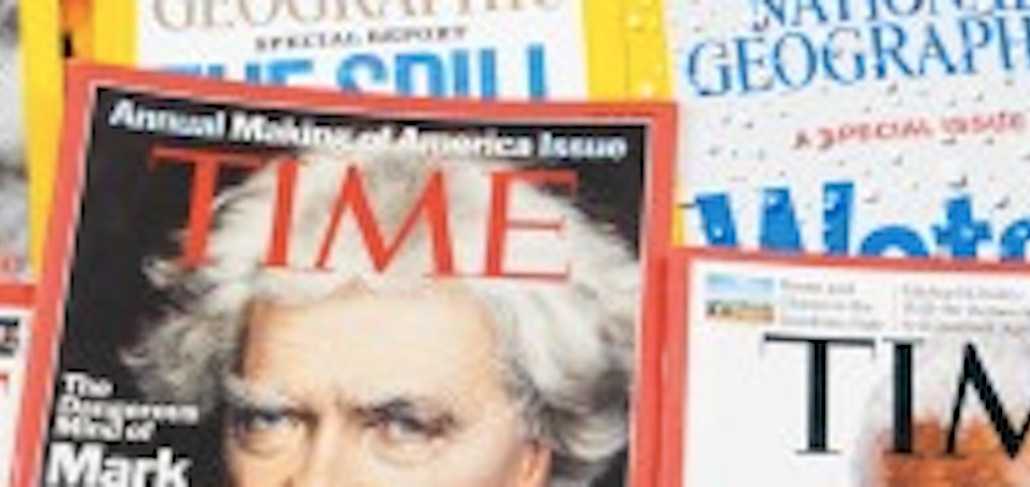
Top magazine companies from Condé Nast to Rodale to Time Inc. convened this week for their annual confab, called the American Magazine Media 360 Conference 2015. The theme, appropriately, was “What’s Next,” as players discussed how they’re grappling with the challenges and opportunities of adapting to the digital upheaval. Here are the top five things we learned.
Magazines still have a lot to learn about digital
The medium’s come a long way in accepting that digital is here to stay, but executives conceded they have a long way to go in getting the skill sets they need to compete against digital natives that aren’t held back by legacy thinking. Companies have dealt with this gap by hiring outsiders or buying digital companies outright, as Condé Nast has in taking executives from its newly formed entertainment group and embedding them into corporate sales, and Meredith Corp. has in buying Selectable Media, an engagement ad company, and installing its executives at the company. “No question, we have to get better at digital,” Condé Nast president Bob Sauerberg said. “We’ve got to find ways for people to help us build great digital products.”
Digital’s the rage, but print’s still important
No one’s denying that print isn’t going to be raking in the dollars like it used to, but the medium still has a place in the advertising ecosystem, as evidenced by the billions the industry took in 2014. It’s in vogue for magazine publishers to call themselves “content companies” or “magazine media companies” (or as Maria Rodale said in the case of Rodale, a “lifestyle company,”), but print is at the core of Hearst Magazines’ business, president David Carey said. “The tactile expression’s very important,” he said. “Why does Schwab open outlets? Because people feel more comfortable with something that has a physical location.” Time Inc. CEO Joe Ripp said, noting that Time magazine’s digital audience surpassed its print audience for the first time in December, said the trusted content that legacy magazines put out still matters in the face of new digital competitors. “We’re not all going to do ’10 ways to feed your gerbil’.”
With limited resources, you have to be creative
There’s an ever-proliferating number of ways that consumers are getting news and entertainment, each demanding its own content approach, and often unique content. That means more work for editors who haven’t necessarily seen their staffs grow commensurately.
For Amy Astley, editor in chief of Teen Vogue, it’s important to hire people she can trust and take a hands-off approach. “We’re on 14 social media platforms,” she said. “Each platform is different. There’s no way I can approve every single tweet,” she said.
At InStyle, editorial director Ariel Foxman found a way to charge digital readers who weren’t necessarily in the market for a print subscription by launching digital how-to style guides. “The expectation of volume is increasing, and you’re not going to get more resources,” he said. “We wanted to figure out how to create more content and see if we could charge.”
Editors are learning to love the native ad
Editors may have once looked askance at or even publicly opposed branded content, or native ads, advertising that’s designed to mimic editorial content. But whether out of self preservation or the realization that the revenue from native will help fund their journalism, editors have become more accepting of the format, if cautious. “You have to provide a level of transparency to your audience,” said Time Inc. sports group editor Paul Fichtenbaum. “They’re smart. They call B.S. all the time, and if you try to call something an editorial product and it’s clearly an advertising product, they’ll call you out on it.” Similarly, Stefano Tonchi, the editor in chief of W (whose parent company Condé Nast recently announced it would tap its editorial teams to help produce native ads), said, “It would be very hypocritical to think magazines don’t have a relationship with advertisers. But there are different degrees of compromise. It is important to find the right balance.”
There’s a science behind sharing
With social media increasingly replacing the home page as a pathway to the news, publishers are trying to get their content shared as much as possible. Jonah Berger, the author of “Contagious: Why Things Catch On,” gave an entertaining if self-promotional presentation about how trends catch on and how publishers can get their audience to do their promotional work for them. In addition to fairly obvious tips (people like to share things that make them feel expert, so focus on content that makes them feel smart and in the know) Berger said in his research, he analyzed six months’ worth of content at The New York Times. The big takeaway was that people are more likely to pass on emotionally-, anxiety- and anger-driven content but not sad stories. “Anytime content arouses high emotion, we like to share,” Berger said. Cue up those hate reads.
More in Media

Digiday+ Research: Publishers take their focus off events as revenue dips
The percentage of publishers making money from events hit a low as of the first quarter of this year and, as a result, fewer publishers plan on putting a focus on growing that part of their business.

What platforms, brands and agencies hope to get out of the Possible conference in year 2
Year two of Possible is once again being held in Miami Beach, and it will take place from April 15-17 with 3,000 attendees expected to listen to another 200 or so speakers, including Snap’s Colleen DeCourcy, Uber Ads’ Megan Ramm and UM Worldwide’s Matthew Smith.

AI Briefing: Cloud giants’ AI ambitions create new partnerships — and new competitive concerns
Last week, tech companies like Google, Microsoft and Amazon all announced updates more updates for their cloud and AI efforts





